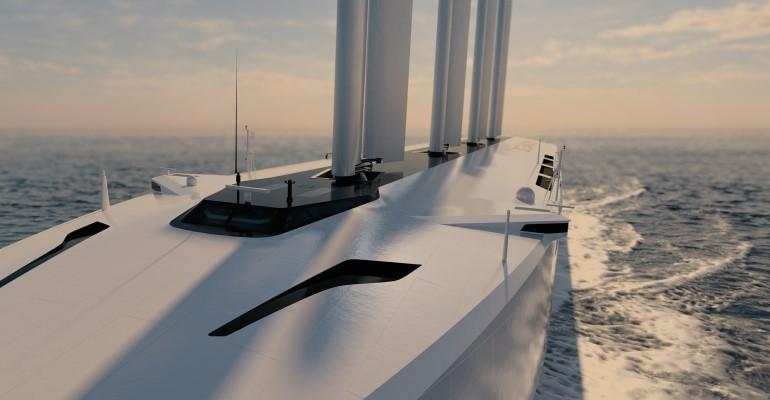The company plans to install sails on board a pure car and truck carrier (PCTC) next year and a new PCTC, Orcelle Wind, is being designed with the sails and could be commissioned in four years’ time.
The first retrofit project will be carried out on board the Wallenius Wilhelmsen pure car and truck carrier, Tirranna, to coincide with the 7,620-CEU ship’s 2024 drydocking. A single sail will be installed for trials and the project will involve hull modifications and strength and stability tests.
At a presentation yesterday, the company highlighted the 60,000 existing ships that are potential retrofit candidates. Ro-ro’s are a good starting point because they have a clear deck and no visibility issues. However, the company is hoping that the Tirranna project will provide valuable experience enabling retrofits to other ship types, including tankers, bulk carriers, and container ships.
With potential fuel and emission savings of 7-10% on existing ships, the sails could provide a boost to ships’ carbon intensity performance, the company noted, as the IMO’s carbon intensity indicator (CII) tightens over the second half of the decade.
For purpose-designed new ships, however, the potential savings are far more dramatic. The company has previously claimed possible fuel and emissions savings of up to 90%, enabling ships to have much smaller engines.
The first sails are 40m high and 14m wide. Consisting of high-strength steel and glass fibre composite, they can be lowered to meet air draft restrictions or tilted in heavy weather. They can be used in winds of up to 40 knots, equivalent to the top end of Beaufort Scale Force 8.
Land-based sail prototypes will be tested later this year. This will facilitate mechanical and operational refinements and provide an opportunity for crew training.
Copyright © 2024. All rights reserved. Seatrade, a trading name of Informa Markets (UK) Limited.
Add Seatrade Maritime News to your Google News feed.  |

